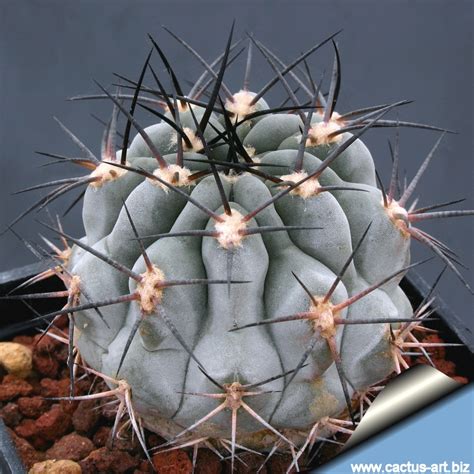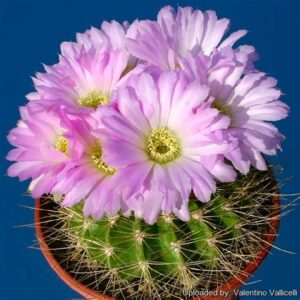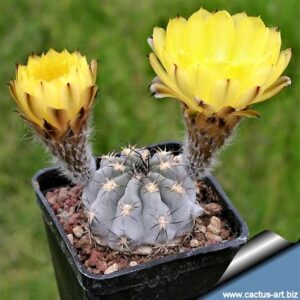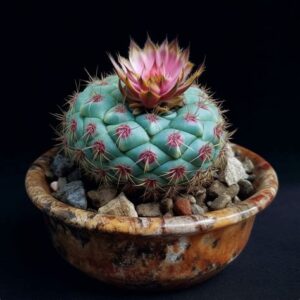When it comes to the captivating world of cacti, two species that often pique the interest of both amateur and seasoned enthusiasts are Acanthocalycium glaucum and Acanthocalycium rubrifolium. Both species share the distinctive traits that define the Acanthocalycium genus, yet they diverge in their care requirements, aesthetic appeal, and adaptability to various environments. This article aims to delineate the essential aspects of cultivating these two fascinating cacti, providing an in-depth perspective on how to ensure their thriving existence in a cultivated setting.
Understanding the nuances between Acanthocalycium glaucum and rubrifolium is crucial for any gardener looking to enhance their collection of cacti. While both species display an array of alluring characteristics, their cultivation needs can vary significantly. The subsequent sections will delve into the botanical specifics, care requirements, and practical growing tips for each species to help you make an informed decision on how to nurture these succulent gems.
Botanical Overview of Acanthocalycium Species
The genus Acanthocalycium is primarily located within the family Cactaceae, comprising several species that are endemic to South America, particularly Argentina and Bolivia. Cacti belonging to this genus are renowned for their globe-shaped bodies adorned with striking spines and, at times, flowers that emerge in a vibrant display during their blooming season.
Acanthocalycium glaucum is characterized by its bluish-green to grayish appearance, featuring a rounded body that can grow up to 15 cm in diameter. Its spines are typically robust, adding texture to its surface while also being aesthetically pleasing. The ribbed surface, which can host small tubercles, provides an intriguing contrast to the smoothness of its skin. In bloom, glaucum presents a delightful array of pink or white flowers, offering a brief, yet dazzling spectacle.
Acanthocalycium rubrifolium, on the other hand, is notable for its deeper-colored, reddish foliage, which serves as an eye-catching contrast against its environmental backdrop. The spherical form of rubrifolium can reach similar sizes to glaucum, but this species often exhibits a more pronounced set of spines. The floral display of rubrifolium is no less impressive, revealing a burst of striking colors when the plant is in full bloom.
Soil Requirements: Laying the Groundwork
The foundation of successful cactus cultivation lies significantly in the choice of soil. Both Acanthocalycium glaucum and rubrifolium thrive in well-draining substrates that minimize the risk of root rot—an all-too-common ailment among cacti.
For Acanthocalycium glaucum, a soil mix that combines traditional potting soil with gritty components such as pumice or coarse sand is ideal. This mixture allows for ample drainage and promotes aeration, ensuring that the delicate root system does not sit in moisture. A suggested ratio would be one part potting soil to one part pumice or sand.
In contrast, Acanthocalycium rubrifolium may exhibit slightly different needs. While the same well-draining qualities are necessary, some enthusiasts recommend incorporating organic matter to retain a modicum of moisture, especially during its growth period. A mixture of one part soil, one part sand, and one part perlite can yield similarly positive results for rubrifolium.
Watering Protocol: Striking the Right Balance
Watering is one of the most critical aspects of cactus cultivation, influencing their health and growth patterns significantly. Both Acanthocalycium species prefer to be watered during their active growth phases, which typically occur in spring and summer, while rest periods during fall and winter call for significant reductions in watering.
For Acanthocalycium glaucum, a thorough soaking during its growth period is essential. However, it is vital to allow the top inch of the soil to dry completely before reapplying water. This practice helps mimic the natural arid conditions of their native habitat, preventing the roots from becoming overly saturated.
Acanthocalycium rubrifolium also benefits from a similar watering regimen. Yet, this species may exhibit a degree of resilience towards dry spells, allowing for slightly longer intervals between watering sessions. Over-watering can rapidly lead to detrimental effects; thus, rationing water supply cautiously is advisable.
Light Requirements: Setting the Scene
Cacti have an innate requirement for sunlight, and understanding the specific needs of glaucum and rubrifolium will contribute greatly to their prosperity.
Acanthocalycium glaucum thrives in areas receiving bright, indirect sunlight, as too much direct sun can scorch its delicate epidermis. Providing a location that filters harsh sunlight, especially during the peak hours of the day, will enhance the growth and flowering potential of glaucum.
Conversely, Acanthocalycium rubrifolium benefits from a slightly more robust exposure to sunlight. It can handle direct sunlight for several hours a day, making it an excellent choice for gardeners searching for a plant that can endure brighter environments. Nevertheless, gradual acclimatization to intense light is advisable to avoid sunburn.
Temperature and Humidity: Navigating the Extremes
Both Acanthocalycium species are well-adapted to extreme temperature fluctuations found in their native locales, showcasing impressive resilience. However, suitable temperature ranges are crucial in a garden setting.
Acanthocalycium glaucum prefers daytime temperatures between 70°F and 85°F (21°C to 29°C) and can tolerate cooler nights as long as temperatures do not drop below 50°F (10°C). This range aids in replicating conditions akin to their natural environment while providing optimal growth.
Acanthocalycium rubrifolium shares similar temperature preferences, with a notable tolerance for slightly higher temperatures. This species can endure short bursts of heat above the 90°F (32°C) mark, but extreme fluctuations should be avoided to ensure stable growth.
Pest and Disease Management: Vigilant Care and Monitoring
No cultivation endeavor is without its challenges, and Acanthocalycium species are vulnerable to pests such as mealybugs and spider mites. Identifying these pests early on is crucial for effective management. Ideally, regular inspections will keep infestations at bay. If pests are discovered, horticultural soaps or neem oil can be applied as eco-friendly solutions.
Furthermore, anticipating potential diseases, particularly those related to over-watering, should be part of your routine care. Recognizing the signs of root rot or stem rot early allows for quick interventions, either through adjusted watering schedules or re-potting the cactus in fresh soil.
Propagation Techniques: Expanding Your Collection
Both Acanthocalycium glaucum and rubrifolium are amenable to various propagation methods, including seed sowing and offsets. Seed propagation, while requiring patience, allows for the preservation of genetic diversity. Sowing seeds in a fine substrate and providing excess warmth and moisture will yield the best results.
Offsets, commonly found at the base of mature cacti, can be gently removed and planted to propagate a new specimen. This method tends to be faster and more straightforward, often resulting in an establishable plant within a shorter time frame.
Conclusion: The Acanthocalycium Dichotomy
In sum, cultivating Acanthocalycium glaucum and Acanthocalycium rubrifolium provides a rewarding opportunity for cacti enthusiasts. Each species offers distinctive traits paired with unique requirements that cater to diverse gardening preferences. With the insights provided, you can approach each species with the knowledge needed to foster their growth and beauty in your collection. Ultimately, understanding the nuanced differences between these two remarkable cacti will guide you to success in your cultivation endeavors, transforming your gardening environment into a living homage to the magnificent diversity within the Acanthocalycium genus.





Leave a Comment